Shrikes are well-known for impaling their prey on sharp projections like thorns or barbed wire as a means of food storage – they’re called “butcher birds” for good reason. I suspect the behavior to do so is innate but to become skilled at it takes practice.
This past summer I found this Loggerhead Shrike on a fence on the Montana farm where I grew up. It had already captured the grasshopper when I arrived on the scene.
First, my standard disclaimer for behavioral sequences. This bird was strongly sidelit so I seldom got a catch light and the light was harsh. To compensate, I did more processing with these images than I normally do because my intent is to show the behavior as well as possible, even though image quality suffered from the processing.

Almost immediately I could see that the shrike was going to attempt to impale the grasshopper on the barb just below and in front of the beak of the bird.
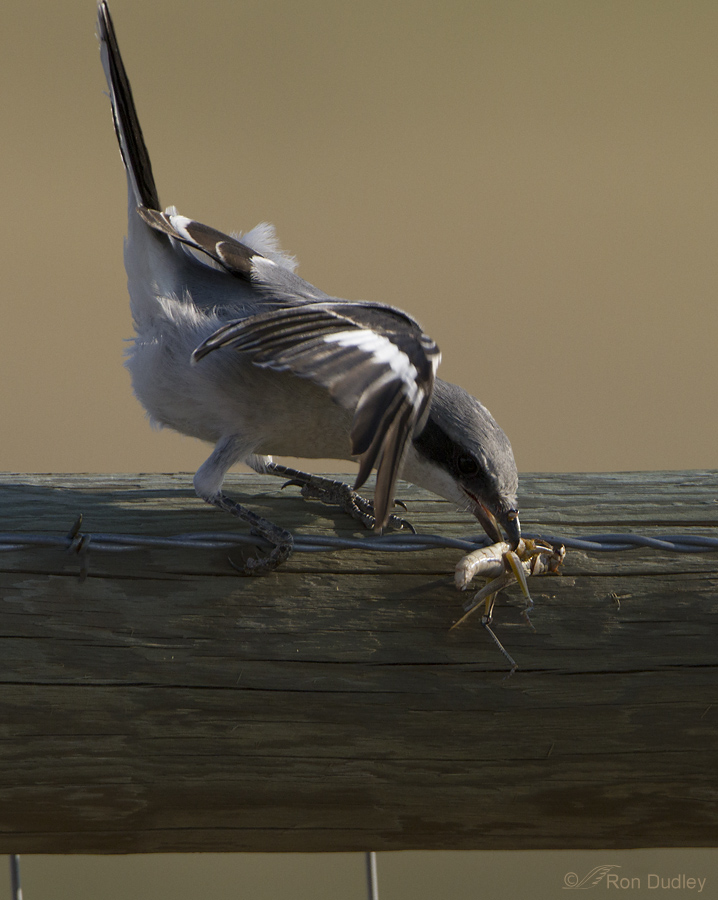
Impaling prey apparently isn’t an easy task.
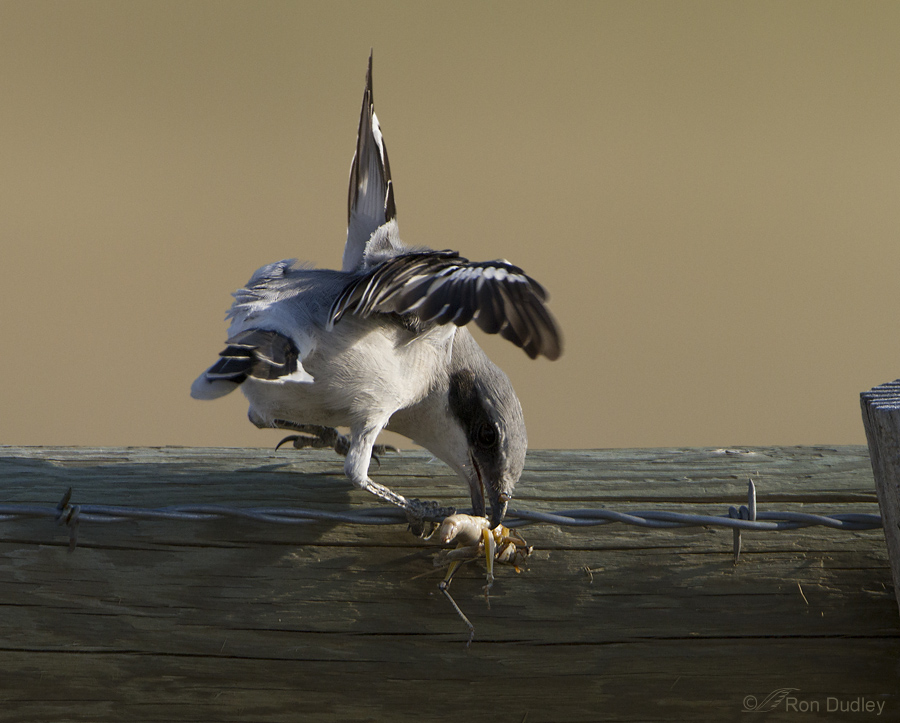
From all the contortions the bird went through…
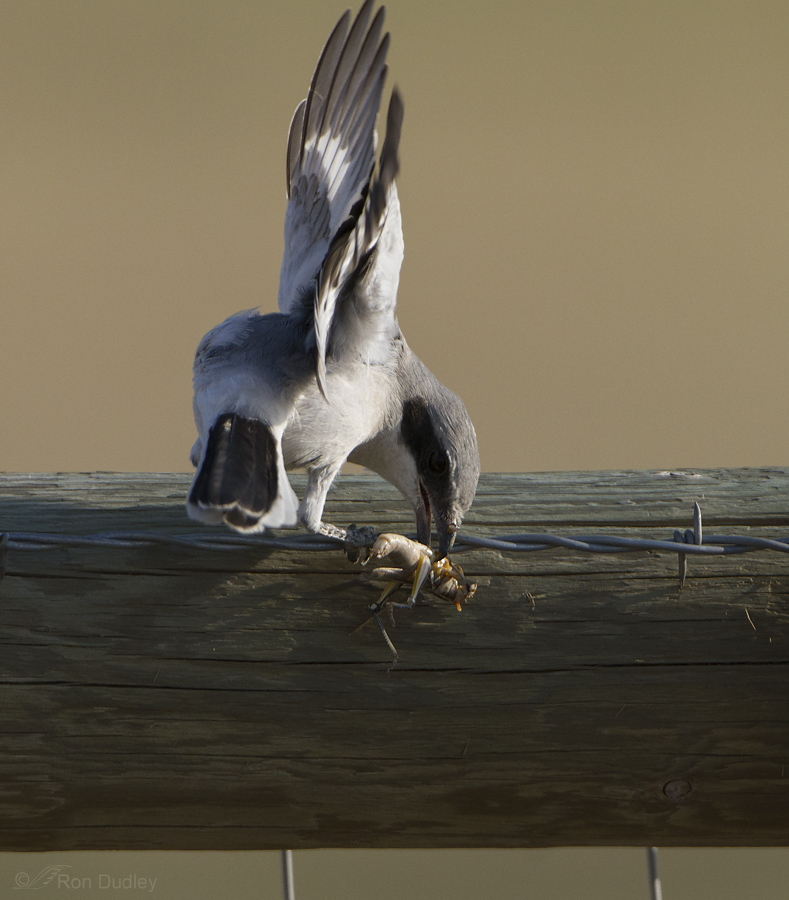
I’d assume that part of the problem was the awkward angle the shrike was at…
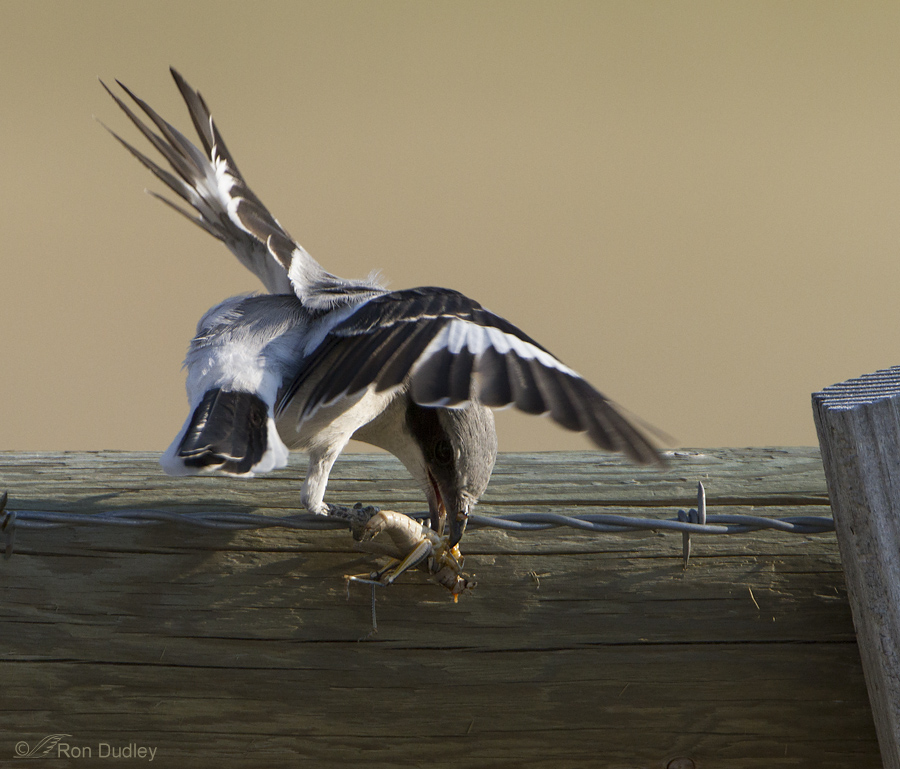
to get proper leverage to complete the task.
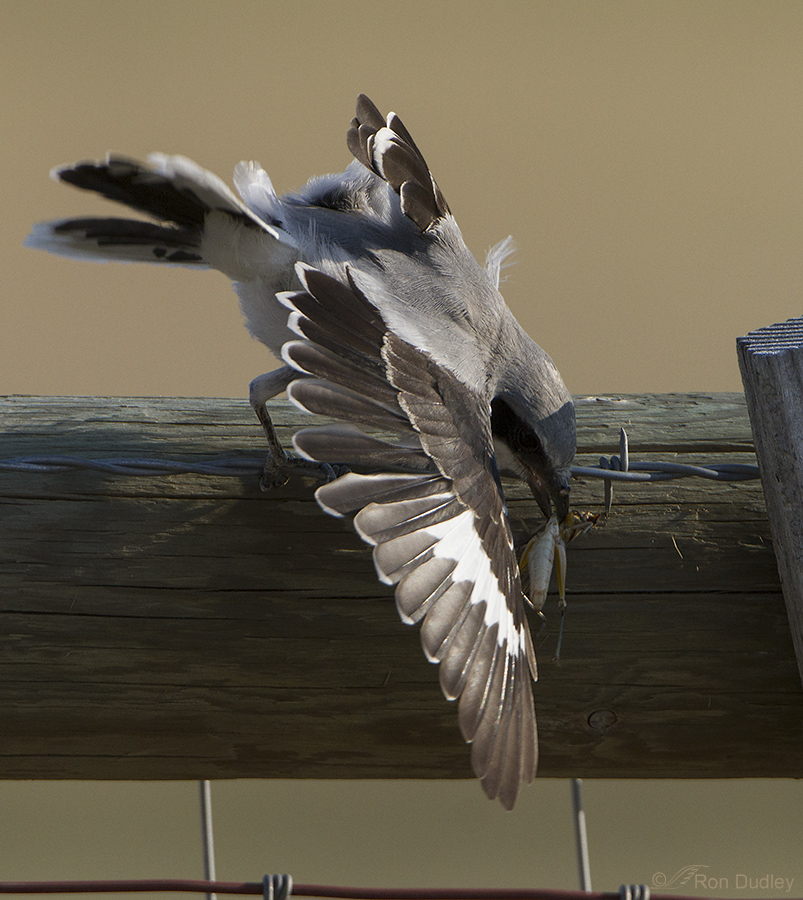
At one point the bird nearly fell off the fence.
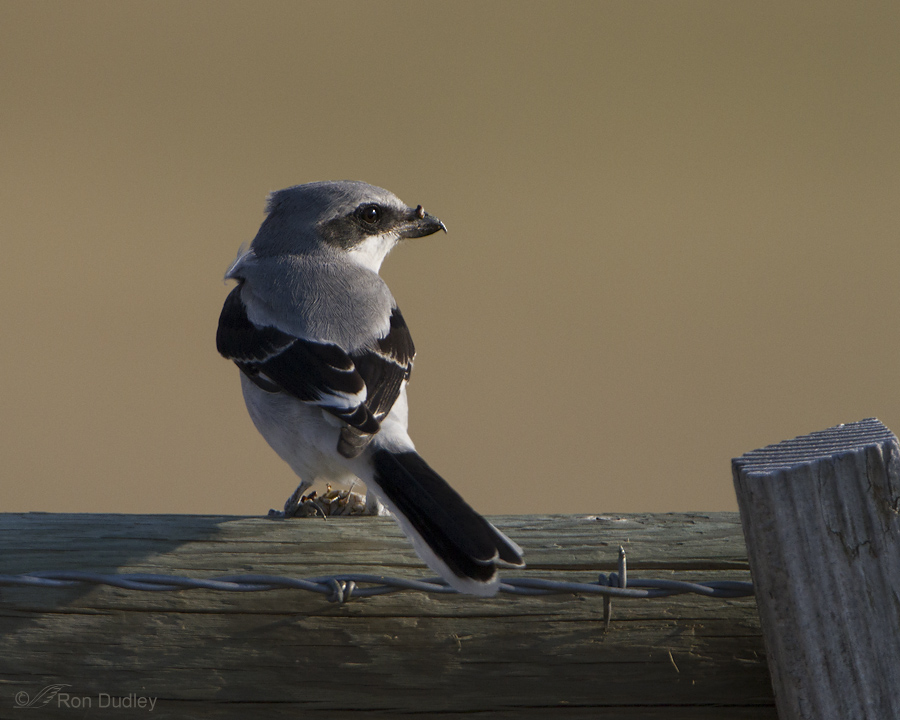
After a few moments the shrike gave up, turned its back on me with the grasshopper between its legs (and a gob of grasshopper on its bill) and seemed to contemplate what to do next.
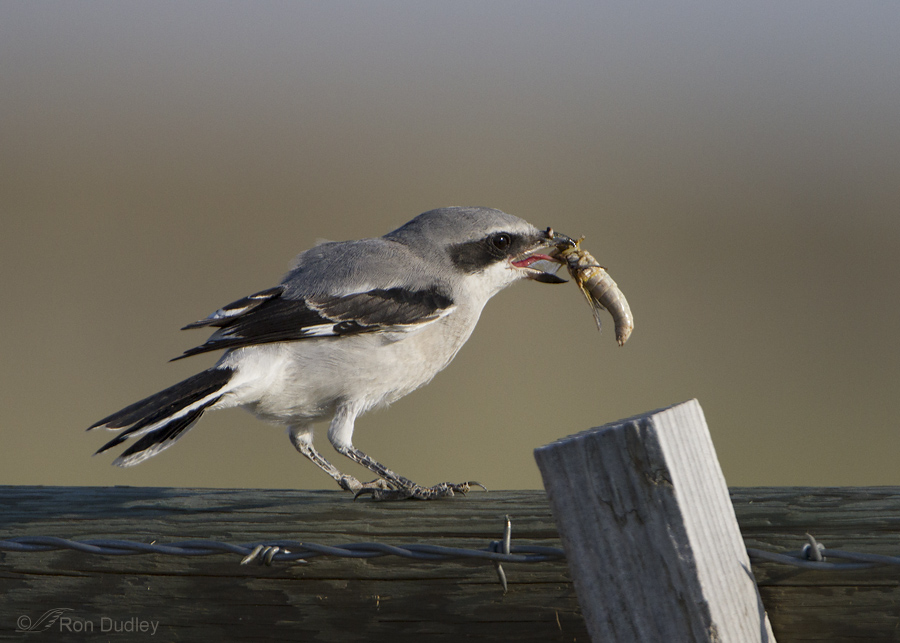
The decision has been made. I’ll just eat the darned thing.
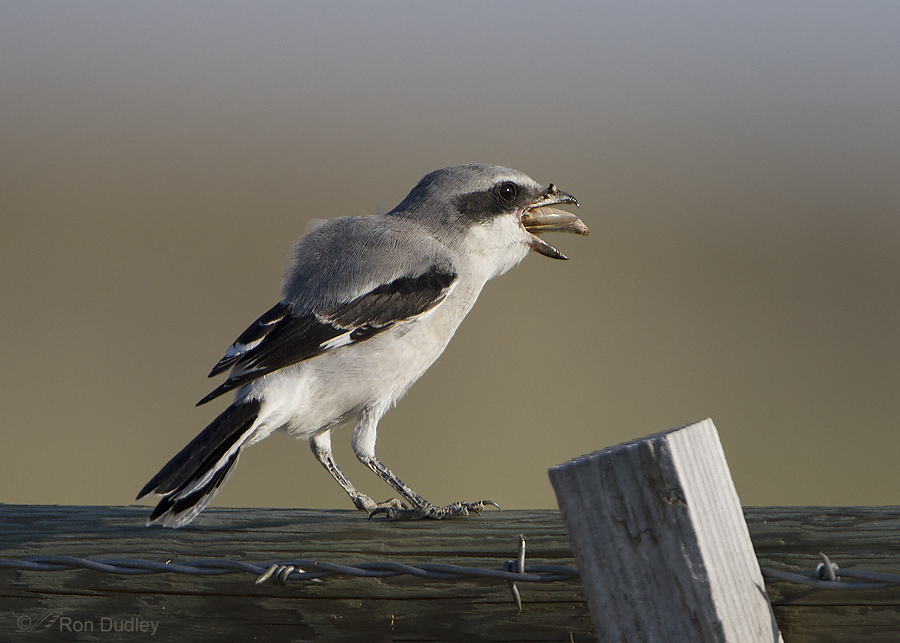
Which it did, with gusto.
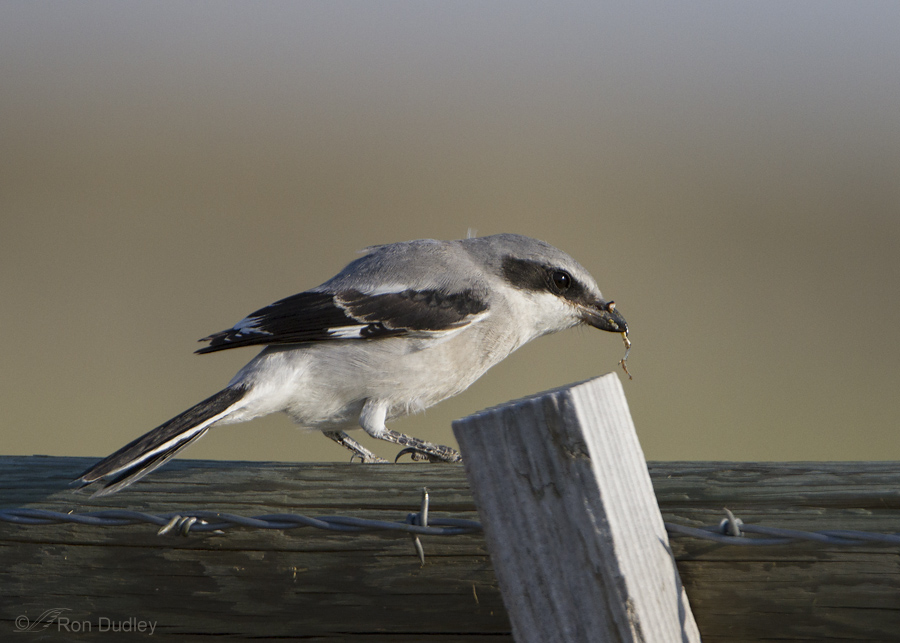
But then it found dessert laying on the fence behind the square post – a leftover leg…
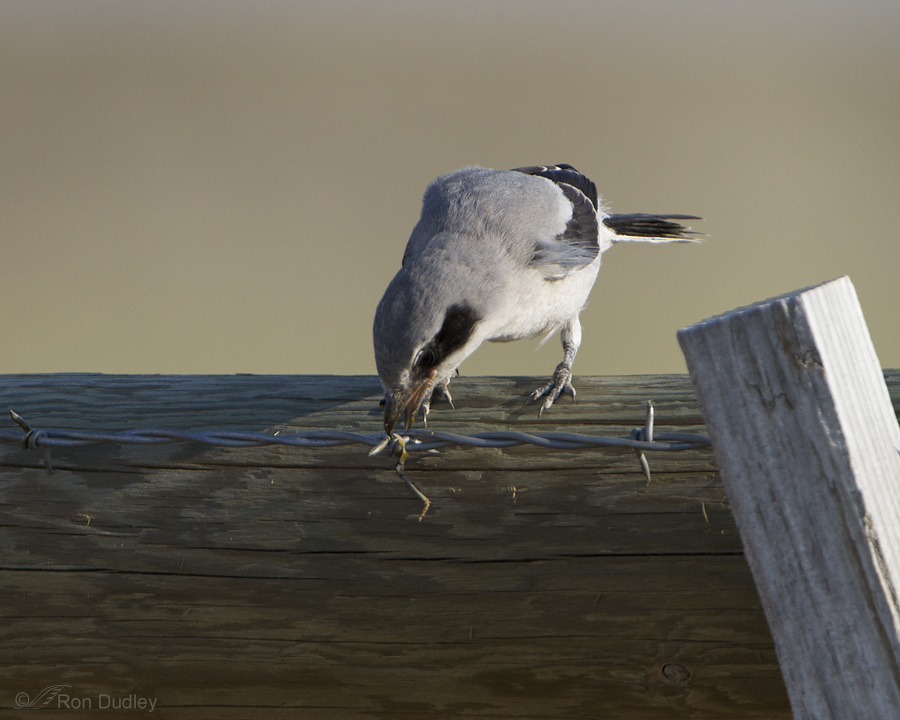
which it also tried to impale on the same barb as before. It didn’t work, of course. I can’t remember if the bird swallowed or dropped the leg.

When it was all over the shrike gave a little hop and then took off.
I’ve seen (and documented here) this behavior before – where the shrike impales (or attempts to impale) the prey and then immediately eats it afterward. I suspect it’s a form of practice. Impaling prey is a complex behavior and an inexact science so learning to do it well likely wouldn’t be easy.
Ron


Watching Loggerheads in Indiana, I’ve come to the conclusion that part of the reason they like to impale insects is to make it easier to pluck off the undesirable bits like legs, stingers, etc. I often see them impale, pluck, and then consume insect prey.
There’s no question that’s part of the reason for the behavior, Amy.
How very cool to catch that behavior in action!
Hi Ron,
Great Pictures and, as always, your timing is impeccable. A good friend and I were in Dodge City KS on a winter falconry expedition last week with our teenage kids (both also falconers) and we came across a thorn tree with a number of grasshoppers and crickets impaled on the thorns. It was a teaching opportunity for us, and I have forwarded your pictures to all of the kids involved.
Shrikes have an interesting place in falconry history. In medieval times, they were kept as pets by professional falcon trappers. They were placed out in the open with a little “house” for cover. When a falcon flew over, it was often too high for the trapper to see, but the shrike would see it and duck into his house for cover. Once the shrike disappeared, the falconer knew that a falcon was overhead and started trying to attract it to the nets. They are not used anymore as they are a protected species.
Thought you might find that interesting.
Keep up the good work.
Mark
Absolutely fascinating, Mark. I had no idea!
What an educational series and unusual experience. If I see a shrike starting to impale its prey, I will probably have to leave the room. 🙂
That made me smile, Ingrid!
That looks like incredibly hard work. I suspect that not only had that Shrike earned its grasshopper, it probably needed it as well. I assume that they come back to prey which has been successfully impaled. Do other birds attempt to pilfer?
Elephant’s Child – Yes, they come back to the impaled prey. I’ve seen a variety of insects and several voles impaled. I’ve never noticed other birds “attempt to pilfer” but I would assume it occurs.
Incredible! As you may know I love these birds. I’m fascinated by this behavior as well, although, I have yet to see it. Maybe if I’m patient, soon enough I will be witness to this peculiarity.
I hope you get to see it, Bryce. Soon.
Wow, absolutely fascinating!!! I’ve never seen this…And displayed so beautifully.
I haven’t seen it often either, Christina – perhaps a half dozen times and I spend a lot of time in the field. Thank you.
As usual, very fascinating story telling. I meant to tell you that I’ve seen several quarrels between the Zenaida doves that warrant further investigation from my part. Apparently there are hierarchies between the juveniles, and/or rituals before they mate.
Thanks, Maria.
Superb sequence! What a great story you and your pictures tell!
Thanks, Tana. I like telling these kinds of stories, when I have visual aids to back them up…
Another truly amazing blog that brought a big smile to my face. Thanks!
That bird made me smile too, Teri. Twice – when I saw the behavior and when I revisited the images for this post.
I love this series of images, Ron. Very educational.
Thanks, Bob. I always appreciate your feedback.
Another excellent behavioral sequence Ron-so interesting to see this and realize what a large variety of prey this bird will hunt.
Thank you, Chuck. You ought to know about the “variety they will hunt” since you’re the one with the nice shot of a shrike carrying a vole in flight! Next time, you drive and I’ll shoot…